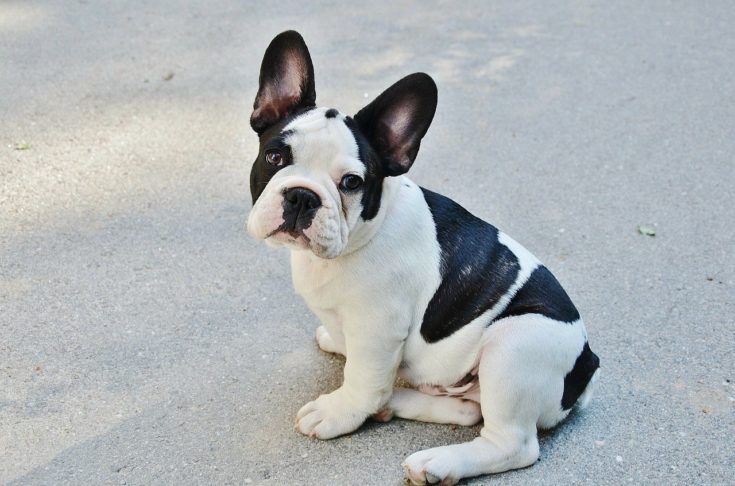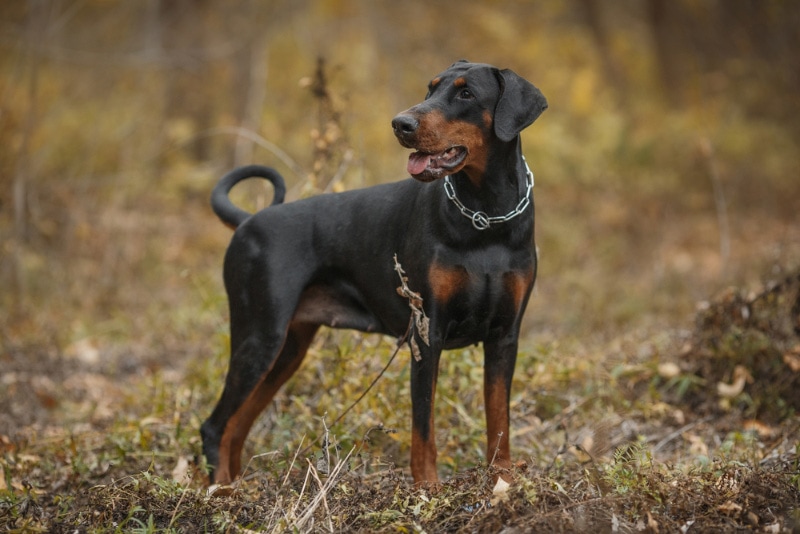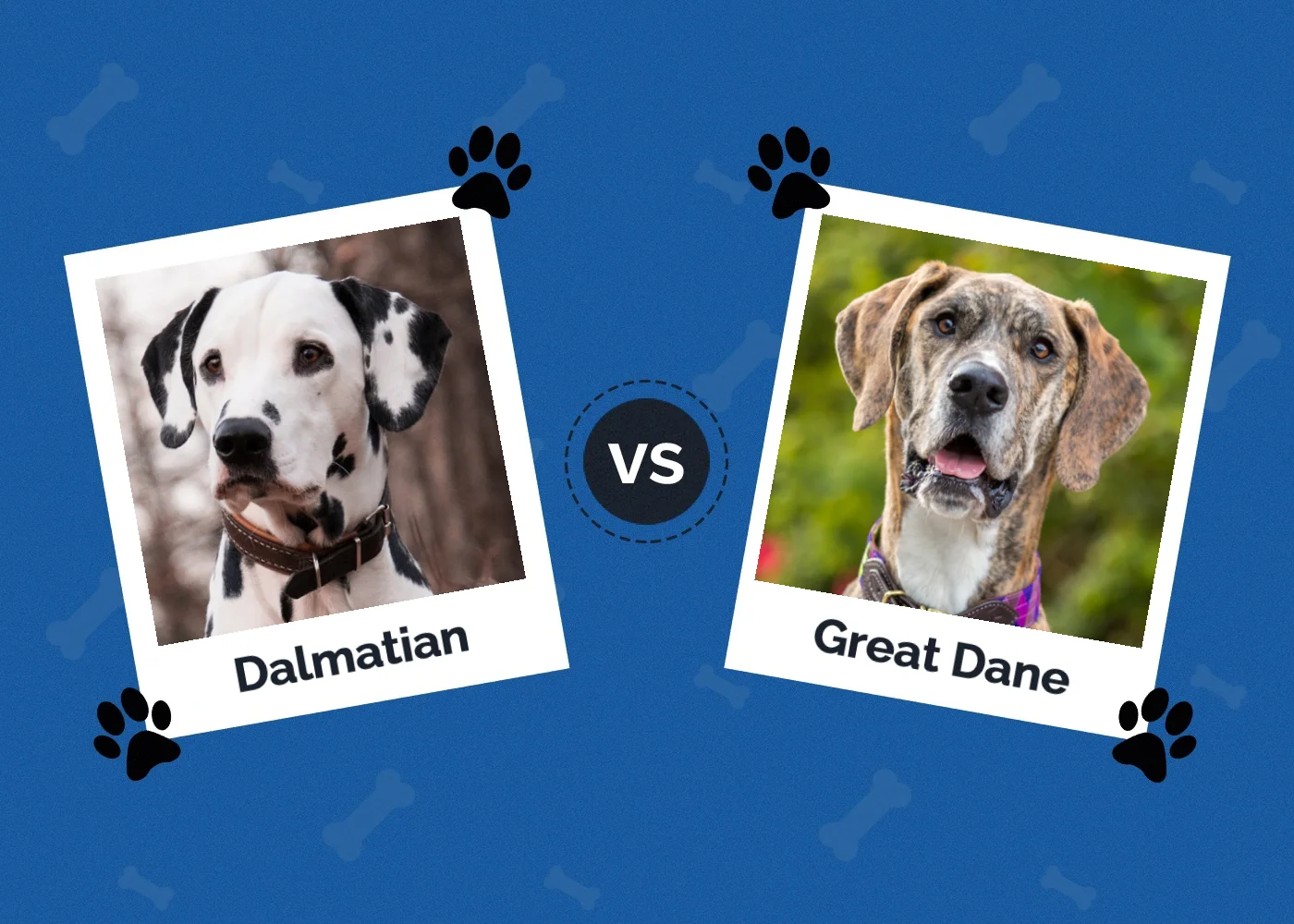Pied French Bulldog: Info, Pictures, Traits & Facts
Updated on

Click to Skip Ahead
Over the years, French Bulldogs have become extremely popular, and the pied French Bulldog is no different. This particular French Bulldog coloration features a primarily white coat with black spots. The level of spotting varies considerably. Some dogs have one or two black spots, while others are nearly half black.
| Height: | 11–13 inches |
| Weight: | < 28 pounds |
| Lifespan: | 10–12 years |
| Colors: | Pied, but also a variety of other colors |
| Suitable for: | Families, Apartment living, multi-pet households |
| Temperament: | Playful, affectionate, adaptable, friendly, smart |
While this coloration is cute, the coat pattern doesn’t affect the breed’s personality or temperament. Therefore, these dogs are extremely similar to other French Bulldogs. They just look a bit different.
Pied French Bulldog Breed Characteristics
The Earliest Records of the French Bulldog in History
The French Bulldog’s history starts hundreds of years ago in England, despite the name. Before 1885, bulldogs were bred in England for use in blood sports like bull baiting. However, when this practice was banned, many of the dogs once bred for this purpose became companion animals. They were no longer bred for fighting bulls but as family dogs.
Around the same time, the industrial revolution was taking place in England. This led to many traditional workers being misplaced, as their jobs were replaced by machines. Many of these workers fled to France, where they were still needed. Some of them brought their dogs with them, including bulldogs.
Over time, these dogs became more and more popular in France. However, breeders were mostly only found in England, so the dogs had to be imported. Often, the English breeders would send over dogs that were considered “rejects” and unsellable in England. Usually, these dogs were “too small,” or they had other faults, like their ears standing upright.
Therefore, the small breed took off in France, while the bulldogs continued to be large in England. In this way, the French Bulldog and English Bulldog were differentiated.
How the French Bulldog Gained Popularity
The French Bulldog was slowly differentiated as its own breed, as opposed to the larger English Bulldog these dogs sprouted from.
These dogs were quite popular throughout France and within many social classes. They were often carried by society ladies, though you would also find them among creatives like artists and fashion designers. Many famous paintings at the time include French Bulldogs.
However, there were no records of the breed kept at this time. Therefore, we don’t know exactly how they were developed. It is thought that other breeds were slowly bred into the French Bulldog to make it smaller and bring out more desirable traits. For instance, terrier stock of some sort was likely added to give the breed their long, straight ears.
Formal Recognition of the French Bulldog
The recognition of the French Bulldog is a bit of a complex subject. The new bulldog type was first seen in England in 1893, which led to an uproar. The smaller French Bulldogs didn’t meet the standard of the English Bulldog. However, the Kennel Club recognized the French Bulldog as a subset of the larger bulldog category. Therefore, the breeds were often directly competing.
However, in the early 1900s, a French Bulldog breed club was established to write a new standard and push for the breed to be recognized as a separate breed from the English Bulldog. The breed standard was the same one used in America at the time, which recognized the French Bulldog earlier than England did.
In 1905, the Kennel Club changed its policy to recognize them as separate from the English Bulldog.
The breed was commonly kept as a pet in the United Kingdom. In 2020, the breed became the second-most popular dog in the United Kingdom, on top of being the fourth-most popular in the United States. In 2022, the French Bulldog was ranked as the most popular breed in the United States as well, according the American Kennel Club.

Top 3 Unique Facts About the French Bulldog
1. They Can’t Swim
Because of their body shape, these animals cannot swim. While they may be able to tread water, they are extremely prone to dry drowning (inhaling water and then drowning later). Therefore, it is recommended that you do not let them swim or encourage them to swim.
2. Vet Bills May Be Higher
Because this breed has a shortened snout, they are prone to breathing problems. Often, this is a problem during surgeries, even if they are minor. Therefore, more veterinary staff is often required to keep an eye on the dog, which leads to higher vet bills for you.
3. Grooming and Flying May Be a Problem, Too
Once again, due to their shortened faces, you may run into issues in other areas. Many airlines don’t allow them to fly, for instance, as they are more prone to overheating while being transported. Groomers often charge more for them, as well, as the service must be rushed to prevent the dog from overheating and standing too long.
Do French Bulldogs Make a Good Pet?
These dogs were bred as companion animals, so they can often be great pets in some circumstances. For instance, they don’t require much exercise or grooming so they are often less maintenance than other breeds out there. Their smaller size also makes them a suitable breed for smaller spaces.
However, their shortened snout can lead to some issues. For instance, vet bills and grooming costs are likely to be higher. Many airlines have banned them, as well. While this may not be a problem for everyone, it is something to keep in mind.
Conclusion
French Bulldogs are one of the most popular companion breeds today. However, that doesn’t mean that they are a suitable option for everyone. While these pied dogs may look adorable, you need to consider their increased risk for health problems and inability to cope with heat before adopting one. If you live in a hotter area, this may not be the best dog for you.
Related Read:
- 18 Small Dogs That Don’t Shed (Breeds With Pictures)
- 10 Best Dog Foods for French Bulldogs With Gas – Reviews & Top Picks
Featured Image Credit: Anne Richard, Shutterstock













